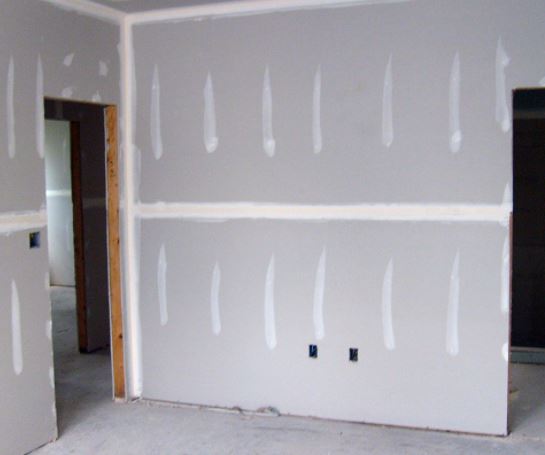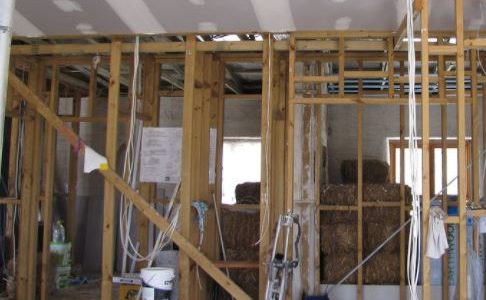
Drywall Inspection
- chinese drywall
- Drywall Inspection
- December 19, 2019
Drywall Inspection
Contents
Drywall inspection is a new concept. Until the Chinese drywall was discovered, drywall had always been an innocuous building material. Now, a drywall inspection is an absolute requirement on any home that was built between 2001 and 2008. The ramifications of not having a drywall inspection prior to buying a home are potentially devastating. The risks associated with continuing to live in a home affected by Chinese drywall without having a Chinese drywall inspection can be debilitating.
There are several types of drywall inspection. Make sure to insist on an inspection that is guaranteed. A comprehensive and guaranteed drywall inspection makes it possible to move forward with a purchase or continue living in your home without worry.
Types of Drywall Inspection
Visual Drywall Inspection
Several methods of Chinese Sheet Rock inspection have been developed. The most basic version is a simple visual inspection. A visual drywall inspection involves the identification of specific signs and symptoms of defective drywall. Typically, the inspector will look for corroded copper wiring, corroded air conditioning coils, and stamps/branding of drywall boards. The combination of these symptoms may be useful in a drywall inspection, but the result of an visual inspection only confirms that there was no outward sign of defective drywall at the time of the inspection.
The subjective nature of visual drywall inspection is also a concern. Varying degrees of corrosion may be evident depending on the conditions within the home. Homes in areas of low humidity seem to be slower to manifest the corrosion that is typically associated with Chinese drywall. In addition, other conditions can cause corrosion within a home. Homes that are vacant for extended periods of time may be exposed to sewer gas which, over time, can contribute to corrosion. A visual drywall inspection will not be able to identify the difference.
Air Sampling Drywall Inspection
Air sampling as a means of drywall inspection has obvious flaws. Though it incorporates a more scientific and quantifiable approach, it does not render accurate and reliable results. This method of drywall inspection is hugely impacted by the immediate conditions at the time of the inspection. Open windows and doors, air conditioning, and occupant traffic can all affect the results of an air sample drywall inspections. Further, the concentration of the gases for which the air sampling inspectors are testing could be at or below the sampling equipment sensitivity.
Material Testing Drywall Inspection
Drywall inspections that involve material testing are by far the most reliable. These inspections involves sampling and analyzing drywall material for specific markers. The CPSC has identified strontium and calcium carbonate as the most reliable indicators of defective drywall. As part of a drywall inspection, sampling material and analyzing it for these two markers has proven to be more than 99.98% reliable.
The crucial aspect of drywall inspections that include material sampling and analysis is acknowledging that most homes were not built with one variety of drywall. As such, a single sample is not an adequate sampling of an entire home. Each subsequent sample increases the coverage and reliability. In order to be eligible for specialty environmental insurance warranty, the average home must be tested in approximately 75 areas. The likelihood of not detecting Chinese drywall when testing that number of samples is so low that the results can be guaranteed. The insurance that is available if a home tests negative based on our comprehensive material sampling protocol protects the owner from any damages that arise in the future from the discovery of Chinese drywall. This drywall inspection the only insurable and underwritten option available.
The material samples necessary are extremely small. Just 1/4” of material makes it possible to analyze the sample on both XRF and FTIR.
Who is a drywall inspection for?
Drywall inspections protect anyone with an interest in the subject property. Most importantly, the occupant of the property is protected from exposure to the adverse health effects associated with Chinese drywall. These health issues range from chronic coughing to severe headaches and insomnia.
Potential owners are also protect by drywall inspections. Anyone considering the purchase of a home built between 2001 and 2008 should request a drywall inspection. The risks of moving forward without a drywall inspection include exposure to the health issues noted above as well as the huge financial loss. Insurance does not cover Chinese drywall nor any of the damages caused. As a result, homeowners are responsible for the repairs. Repair costs on an average home easily exceed $50,000. Why make the decision to buy a $300,000 home without the protection of a $1,000 drywall inspection?
Lenders, Realtors, insurance companies, REO management companies, and potential renters are among the others that should be interested in a drywall inspection.





